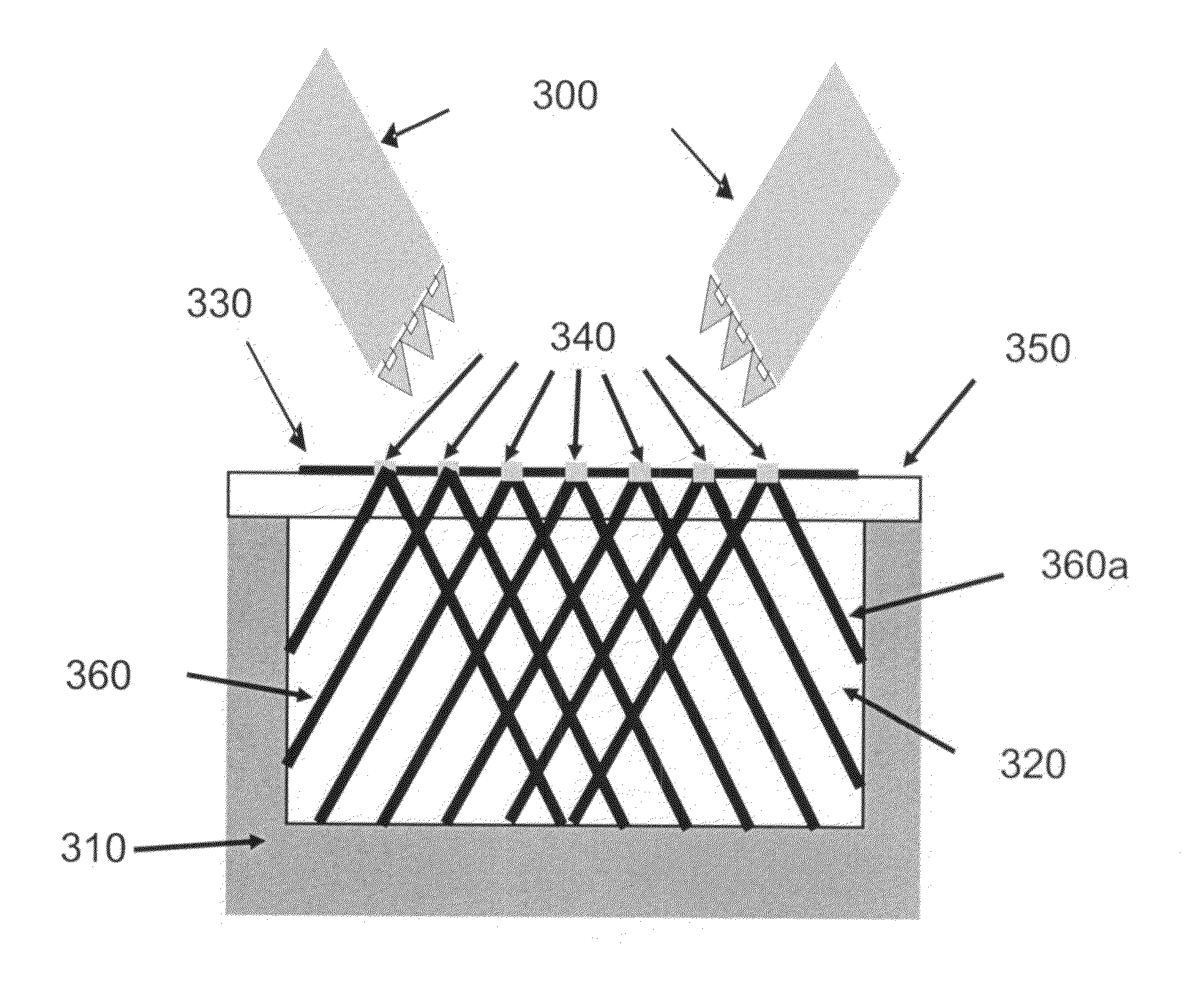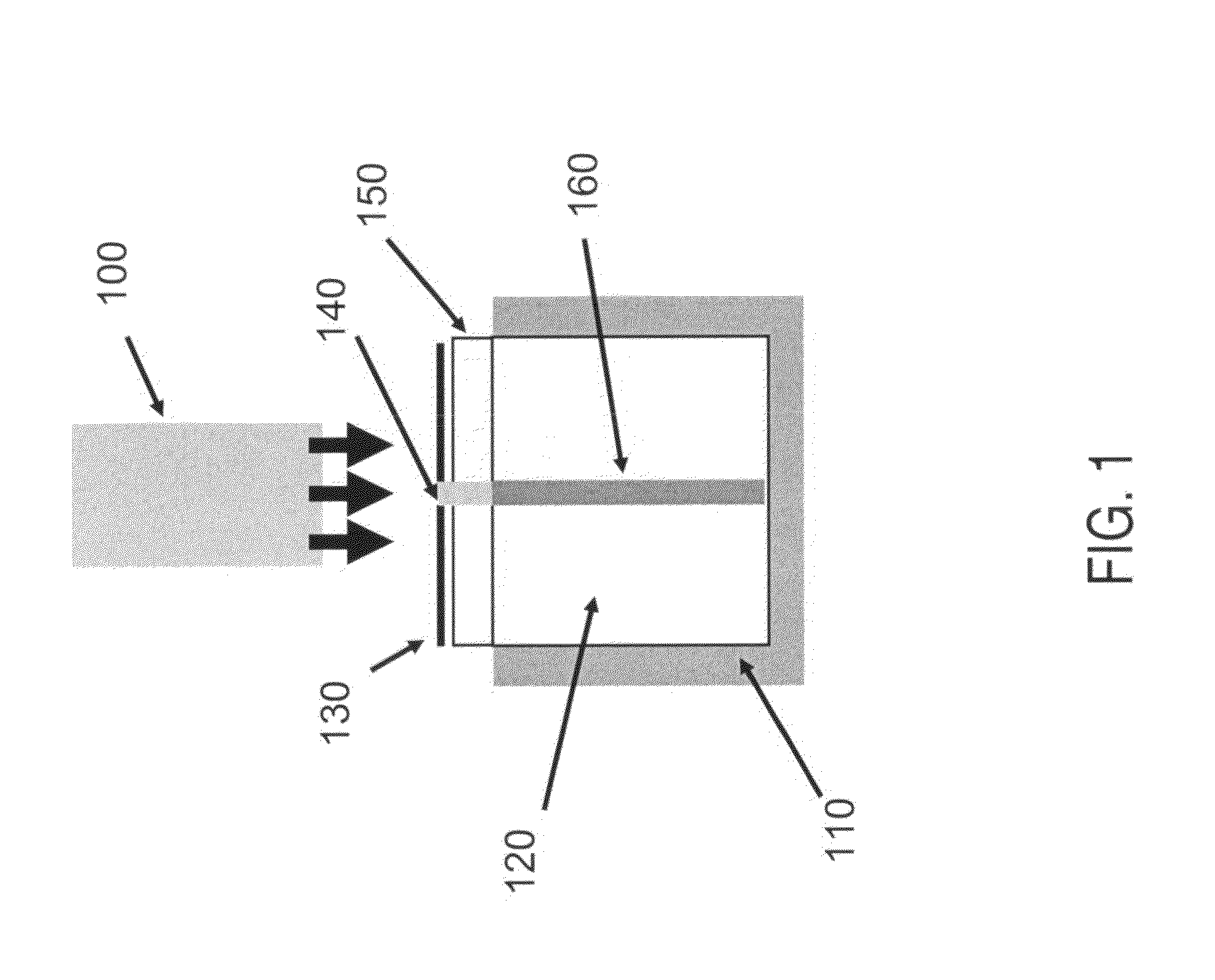Optically oriented three-dimensional polymer microstructures
a three-dimensional polymer and microstructure technology, applied in the field of optically oriented three-dimensional polymer microstructures, can solve the problems of limiting structure, preventing scalability, and advancing process still relies on complicated and time-consuming layer-by-layer approach
- Summary
- Abstract
- Description
- Claims
- Application Information
AI Technical Summary
Benefits of technology
Problems solved by technology
Method used
Image
Examples
example
[0065]In forming a 3D polymer structure, a mold with an open top is filled with a monomer that will polymerize in the UV regime. The depth of this mold cavity is approximately 6 mm and was filled with a commercial photo-monomer. This commercial photo-monomer polymerizes via free-radical polymerization when exposed to UV light (wavelength between 250-400 nm), and is highly transmissive to light in this wavelength range—a property required for the formation of polymer waveguides. Non-limiting examples of the photo-monomer include any suitable free-radical photopolymer materials, such as urethanes (polyurethanes), acrylates, methacrylates, cationic polymers, such photo-cured epoxies, etc.
[0066]A glass substrate that is substantially transparent to UV light is placed on the top surface of the monomer and a Mylar mask is placed on top of the substrate (e.g., see FIG. 4). For this embodiment, the substrate is used to provide space between the mask and the monomer so the polymerized cellul...
PUM
| Property | Measurement | Unit |
|---|---|---|
| depth | aaaaa | aaaaa |
| wavelength range | aaaaa | aaaaa |
| diameter | aaaaa | aaaaa |
Abstract
Description
Claims
Application Information
 Login to View More
Login to View More - R&D
- Intellectual Property
- Life Sciences
- Materials
- Tech Scout
- Unparalleled Data Quality
- Higher Quality Content
- 60% Fewer Hallucinations
Browse by: Latest US Patents, China's latest patents, Technical Efficacy Thesaurus, Application Domain, Technology Topic, Popular Technical Reports.
© 2025 PatSnap. All rights reserved.Legal|Privacy policy|Modern Slavery Act Transparency Statement|Sitemap|About US| Contact US: help@patsnap.com



